Line Guard Harpoon Points from the Prince Rupert Harbour
Today’s installment of our Prince Rupert Harbour Harpoon Point Series showcases barbed harpoon points with line guards (please see our September 3, 2013 update for Drilled Line Hole Harpoons)! These artifacts all come from Prince Rupert Harbour Sites GbTo-13 and 54. Click on the photo below and you can zoom in on each beautifully photographed artifact in full resolution! Thanks again, Andrew Eckert!

Harpoon points are designed to penetrate an animal and have a line attached to them. The spear shaft falls out and can be recovered later. The line could be either held in the hand (for small animals), or, for bigger game, attached to a float (sealskins or large bladders) to create drag and tire the animal, and then prevent it sinking after it died. All harpoons comprise quite complex systems that combine different materials and design components. Tim Rast’s Elfshot blog has a great example of the various parts of an eastern Archaic harpoon, along with some creepy-cool experimentation with ballistics gel to see how harpoons actually work.
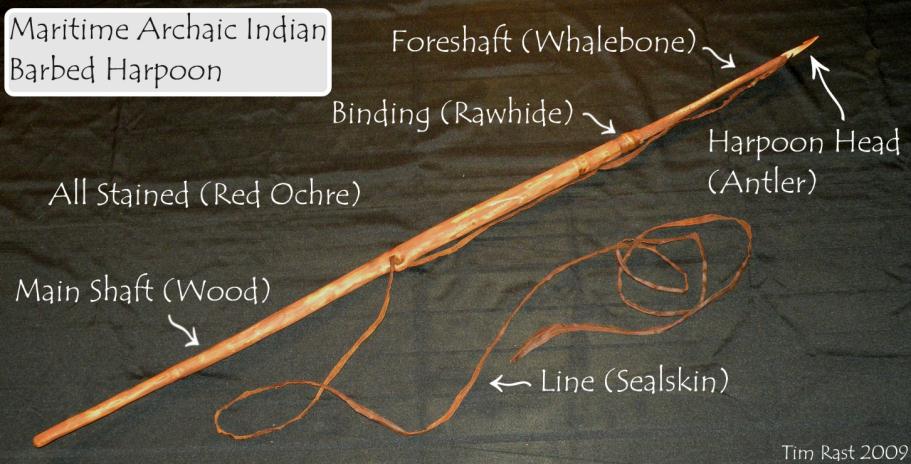
There are a number of ways to attach a line to a harpoon head. These are line holes; notched line guards; simple notches or constrictions with shoulders which prevent the line from slipping off; and toggling harpoons. The first ‘harpoon post’ showed drilled line hole harpoons. The second showed large slate points with serrated line guard notches, as well as more subtle notches. This post shows notched and shouldered line guards on bone harpoons. The Prince Rupert 2012/13 sites also have a large number of beautifully crafted whalebone rods that were likely harpoons and will be shown in a later blog.

Top Left: Multi-notched uni-lateral line guard harpoon points
We divided our harpoons into ‘unilateral’ and ‘bilateral’ based on whether barbs were on one side or two. Line guards also seem to be divided between those on just one side or both. All this group of harpoon heads have rough notches that probably held a sinew line through friction. Some are just small fragments but the row of notches are distinctive.
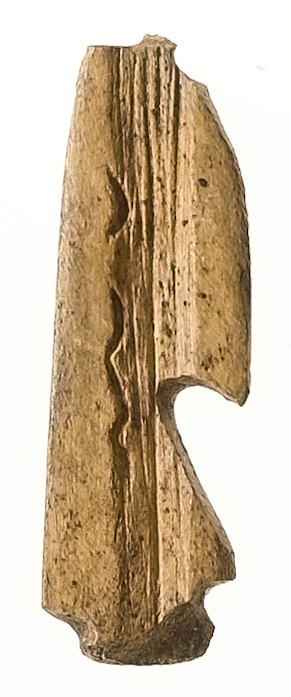
Top Middle: Uni-lateral line guard harpoon point with MAKERS MARK!?
This fragment is a multi-notched uni-lateral line guard harpoon point as well, but what makes it stand out from the rest are the wave like incised markings on one face! Get a close up high resolution view by clicking on the first layout photo and zooming in! Maker’s marks were used on harpoons in many cultures both on the Northwest Coast and elsewhere.
Harpooned sea mammals often were lost; if someone else either later speared the weakened animal or if it was recovered as “flotsam”, then having your mark on the harpoon might mean you had a claim to share in the meat, blubber, and other products.
There are only a few harpoons with such marks from Prince Rupert Harbour, but even so we wonder if the marks are related to similar designs on bone bracelets (stay tuned…); perhaps as a way of directly showing ownership of the design.
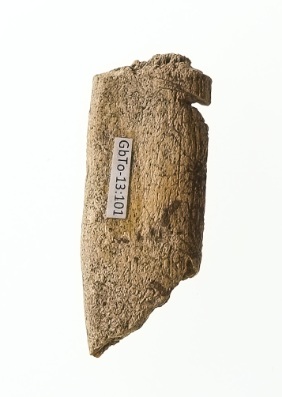
Top Right: Single-notched uni-barbed line guard harpoon point
We kept turning this artifact up both ways to figure out whether we had a small barb or a large line-guard notch! Eventually we realized we had one complete notch, a part of a second, and a tiny part of the angled sawn barb.
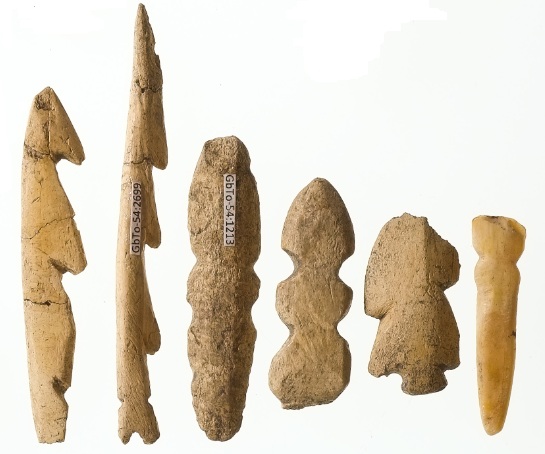
Middle Right: Possible Pendents
The two left artifacts are clearly harpoon shapes, one with unilateral line guard notches, and one with three notches including one on the proximal end; but they are much smaller than other harpoons. Miniature harpoons have been found at other sites in Prince Rupert Harbour where they were clearly pendants (Ames 2005:223-224). We realized the two left-most artifacts had some relationship with other carved fragments; there seems to be a group of artifacts that were miniature harpoons, or harpoon ‘effigies’ that incorporate the essence of harpoons. All were likely non-functional, and never made to be actually used.
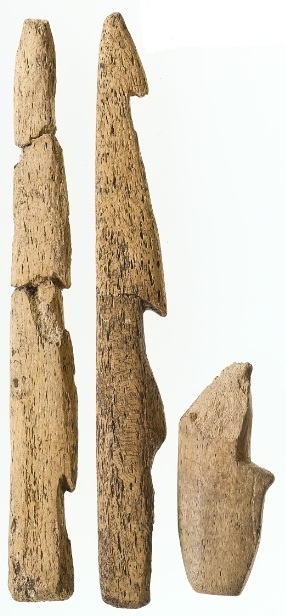
Bottom Left (1st to 3rd): Unilateral shouldered harpoon point
Line guards can be shouldered as well as notched. These have wider bases where the line can’t slip past; but the left two have been broken and repaired by smoothing the broken surface.
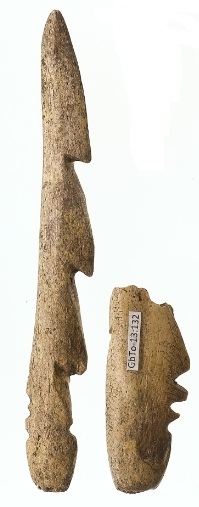
Bottom Middle (4th and 5th): Uni-laterally barbed with bi-laterally notched line guards
These two have line guard notches on both sides, but unilateral barbs. There is just a tiny part of the second side notch on the right example, near the top break.
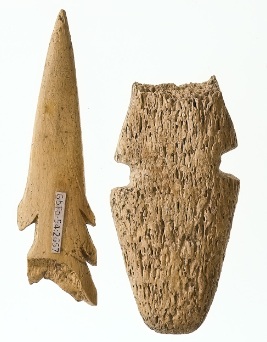
Bottom Right (6th and 7th): Bi-laterally barbed or notched
The point on the left is missing it’s base, so no assumptions can be made as to whether it was shouldered, notched or even drilled. Its unique at the two sites by having clear bilateral barbs. The point on the right is less certain to be a harpoon. It is made of a porous material (sea mammal or antler), that was the preferred material for many harpoons. There have been a few bilaterally-barbed harpoons from other central and northern sites that have rather similar bilateral line notches but maybe this was something else entirely?
Ames, K. M.
2005: The North Coast Prehistory Project Excavations in Prince Rupert Harbour, British Columbia: The Artifacts. British Archaeological Reports: International Series 1342. John and Erica Hedges Ltd, Oxford.
